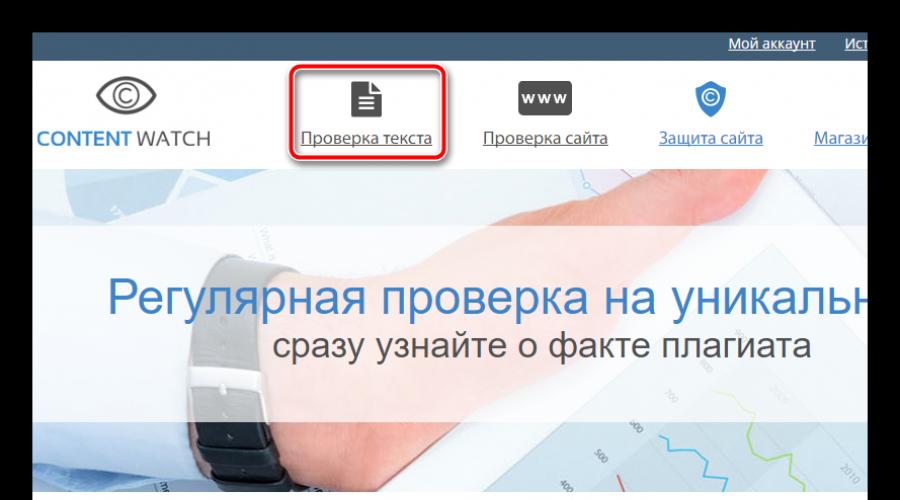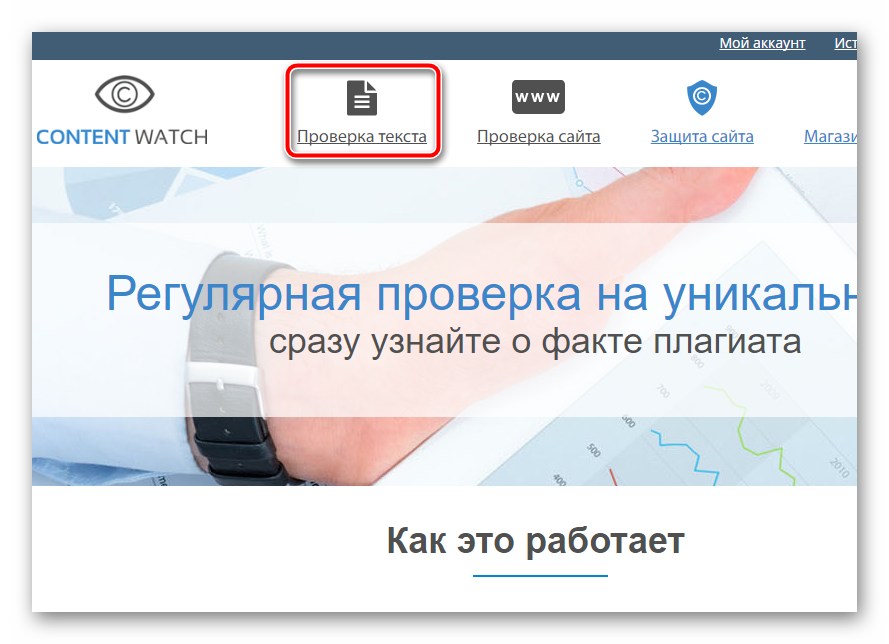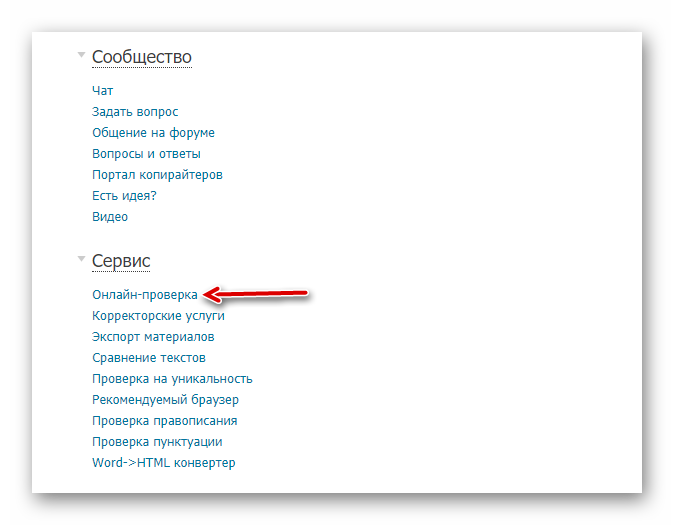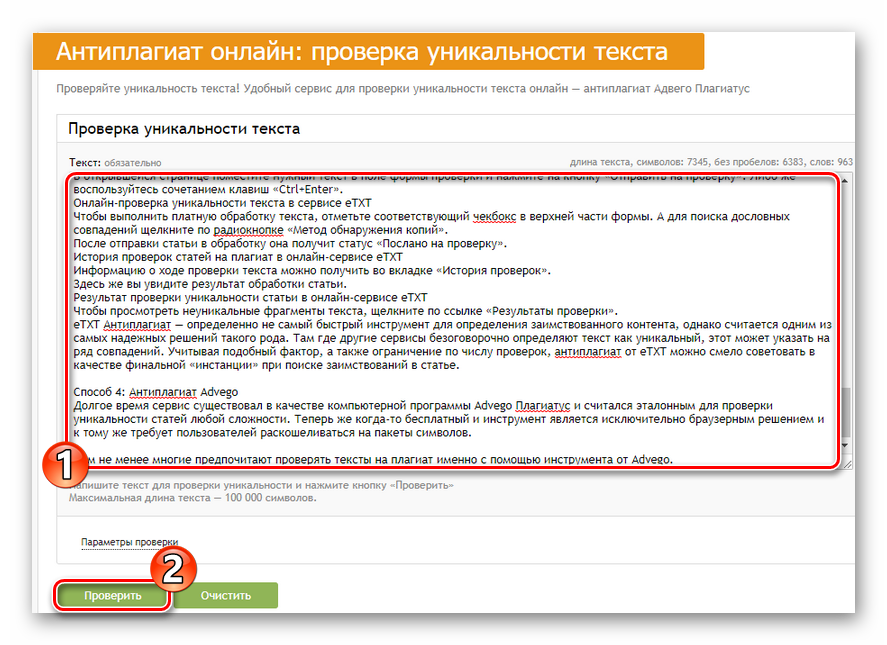Checking articles for uniqueness online

One of the main criteria for evaluating content, both for webmasters and for authors of texts on the web, is uniqueness. This value is not abstract, but more than specific and can be determined as a percentage using a number of programs or online services.
In the Russian-speaking segment, the most popular solutions for checking uniqueness are eTXT Anti-plagiarism and. The development of the latter, by the way, has already been discontinued, and its replacement is the online service of the same name.
The only program of this kind that has not lost its relevance is eTXT Antiplagiarism. But more convenient and effective for many users are web tools that allow you to correctly check the uniqueness of any text.
In addition, online solutions are constantly supported by developers who introduce new features and improve content processing algorithms. So, unlike programs installed on a computer, anti-plagiarism services can quickly adapt to changes in the work of search engines. And all this without the need to update the code on the client side.
Almost all resources for checking content for plagiarism are free. Each such system offers its own duplicate search algorithm, as a result of which the results obtained in one service may differ slightly from those of another.
However, it cannot be stated unequivocally that some resource performs text verification faster or much more accurately than a competitor. The only difference is which one is preferred by the webmaster. Accordingly, for the contractor, it will be important only what service and uniqueness threshold the customer has determined for him.
Method 1: Text.ru
The most popular text uniqueness checker online. You can use the resource absolutely free - there are no restrictions on the number of checks here.
To check an article up to 10 thousand characters in size using Text.ru, you do not need to register. And to process the material more voluminous (up to 15 thousand characters), you still have to create an account.

Using Text.ru to determine the uniqueness of content, the author can exclude possible borrowings from the texts written by him. In turn, the webmaster receives an excellent tool to prevent the publication of low-quality rewrite on the pages of his site.
The service algorithm takes into account such materials uniqueization techniques as rearrangement of words and phrases, changes in cases, tenses, point replacements of phrases, etc. Such fragments of text will be necessarily highlighted with colored blocks and marked as non-unique.
Method 2: Content Watch
The most convenient service for checking text for plagiarism. The tool is characterized by high data processing speed and accuracy of recognition of non-unique fragments.
In the free mode of use, the resource allows you to check texts with a length of no more than 10 thousand characters and up to 7 times a day.
Even if you do not intend to buy a subscription, you still have to register on the site to increase the character limit from three to ten thousand.

This solution looks more attractive for the owners of sites with content. Content Watch offers the webmaster a number of tools for determining the uniqueness of the mass of articles on the site as a whole. In addition, the resource has the function of automatically monitoring pages for plagiarism, which makes the service a serious option for SEO-optimizers.
Method 3: eTXT Antiplagiarism
At the moment, the eTXT.ru resource is the most popular content exchange in the Russian-speaking segment of the network. To check texts for plagiarism, the creators of the service developed their own tool that determines any borrowings in articles as accurately as possible.
eTXT anti-plagiarism exists both as a software solution for Windows, Mac and Linux, and as a web version within the exchange itself.
You can use this tool only by logging into your eTXT user account, whether it's a customer or a contractor. The number of free checks per day is limited, as well as the maximum possible length of the text - up to 10 thousand characters. By paying for the processing of the article, the user gets the opportunity to check up to 20 thousand characters with spaces at a time.

eTXT Anti-plagiarism is definitely not the fastest tool for detecting borrowed content, but it is considered one of the most reliable solutions of its kind. Where other services implicitly define text as unique, this one can point to a number of matches. Given this factor, as well as the limitation on the number of checks, eTXT anti-plagiarism can be safely advised as the final “instance” when searching for borrowings in an article.
Method 4: Advego Plagiarism Online
For a long time, the service existed as a computer program and was considered a benchmark for checking the uniqueness of articles of any complexity. Now, the once free tool is a browser-only solution and also requires users to shell out for character packs.
No, the original Advego utility hasn't gone anywhere, but its support is almost completely discontinued. The quality and outdated algorithms of the program no longer allow it to be used to search for borrowings.
However, many people prefer to check the uniqueness of texts using the Advego tool. And only thanks to the plagiarism search algorithm developed over the years, this solution is definitely worthy of your attention.
The Advego resource, which, like eTXT, is a popular content exchange, allows only authorized users to fully use its functionality. Therefore, to check the text for uniqueness here, you will have to create an account on the site or log into an existing account.

In the article, we reviewed the best and most convenient web services for checking the uniqueness of articles. There is no ideal among them, each has both disadvantages and advantages. We advise webmasters to try all the tools described above and choose the most suitable one for themselves. Well, for the author in this case, the determining factor is either the requirement of the customer, or the rules of a particular content exchange.